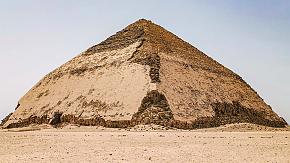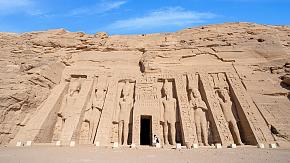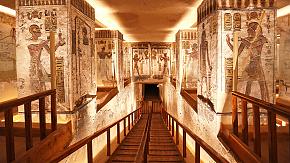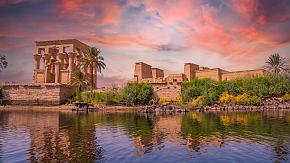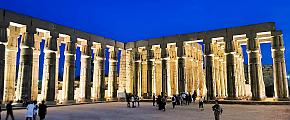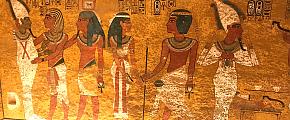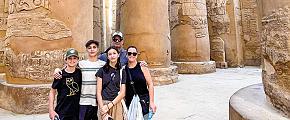10 of the Most Amazing Temples to Visit in Egypt
Egypt's amazing legacy is visible in the monuments and temple architecture, which is fitting for a nation with such a rich and varied history. Many of the ancient Egyptians' magnificent monuments are still standing today, giving visitors a rare chance to walk among the enigmatic stones that continue to ring with the myths and mysteries of these ancient lands. These temples represent the virtuosity of the ancient Egyptians in the art and engineering behind their magnificent monuments. This article lists top 10 temples to visit in Egypt.
Luxor Temple
The largest and most significant religious complex in ancient Egypt, the Luxor Temple is one of the best preserved ancient Egyptian ruins. The Luxor Temple is still a magnificent landmark that depicts both the might and splendor of the ancient Egyptian empire as well as the Egyptians' devotion to the divine due to the great number of its structures, sculptures, and reliefs that are still in condition. The large colonnaded hall, which is over 61 meters long and has 28 columns that are each 21 feet tall, is among the complex's remaining structures. The complex is stunningly lighted to emphasize the reliefs, with columns placed against the dusky sky, making it perfect to visit in the evening as the light fades.
Location: Luxor City, Luxor, Luxor Governorate 1362501, Egypt
 Luxor Temple
Luxor Temple
Karnak Temple
One of the numerous historic landmarks in Luxor is the Karnak Temple. The Karnak Temple Complex is made up of several temples, chapels, and other structures that resemble villages since Karnak means "fortified village" in Arabic. The temple was the biggest religious building of its day at its height since it was constructed as a cult temple. The temple's hall, which has 134 enormous columns, is the biggest chamber of any temple in the whole globe. The entire hall was decked. All of the walls' and columns' axes are decorated with reliefs and inscriptions that show deities were worshipped there. Notably, the entryway to the sacred lake, where the priests would cleanse themselves and carry out religious ceremonies, was to the east of the temple.
Location: Karnak, Luxor, Luxor Governorate, Egypt
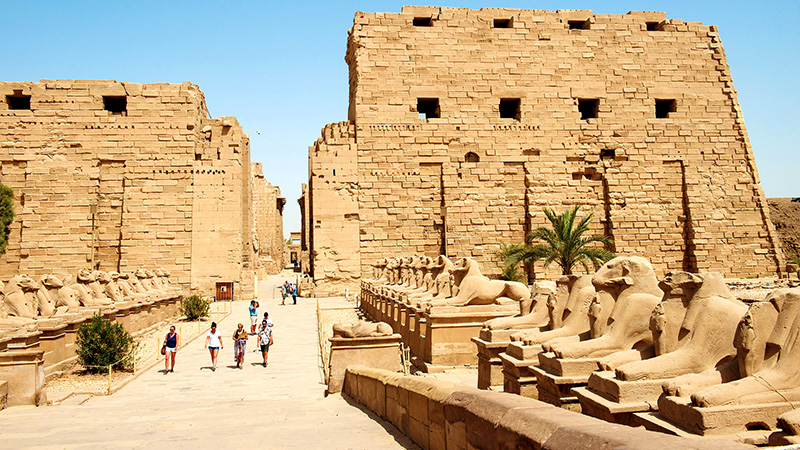 The Karnak Temple
The Karnak Temple
Ramesseum Temple
The most well-known pharaoh of the 18th Dynasty, Ramses II, had his burial at the Ramesseum Temple. To enable Egyptians throughout history to practice their religious rites, which included praying and presenting sacrifices to the gods, the temple was constructed in a public setting. Additionally, it was constructed to honor the Pharaoh's majesty and military and political accomplishments. Two enormous rock sculptures of Ramses II, each standing 18 meters tall and weighing more than 1,000 tons, are on display in the Ramesseum Temple. The site thereafter underwent repeated vandalism by the succeeding pharaohs, but it was also damaged by natural events. Eventually, in the early Christian era, it was converted into a Christian place of worship. The Battle of Kadiash, the Syrian War, and the Min Festival are among the incidents that are depicted in reliefs on just approximately half of the hall's walls, despite the fact that the hall is currently supported by enormous columns.
Location: Edfo, Luxor Governorate 1341711, Egypt
Temple of Kom Ombo
By Ptolemy VI Philometer, the Temple of Kom Ombo was constructed between 332 BC and 395 AD. The temple, which is regarded as a Ptolemaic invention, was constructed by elephant riders using local limestone. Unfortunately, hardly much of the old building is still there. Large portions of the temple have been damaged over thousands of years by earthquakes, Nile erosion, and construction workers who took stones for unrelated projects. In 1893, a French archaeologist renovated it. The main courtyard is surrounded by 16 painted columns, and in the center of the courtyard is a granite altar. The temple is built entirely symmetrically. It features two entrances, two sanctuaries, and two halls with columns supporting them. Notably, the several mummified crocodiles discovered close to the temple are displayed in a chamber inside the temple.
Location: Nagoa Ash Shatb, Markaz Kom Ombo, Aswan Governorate 1281301, Egypt
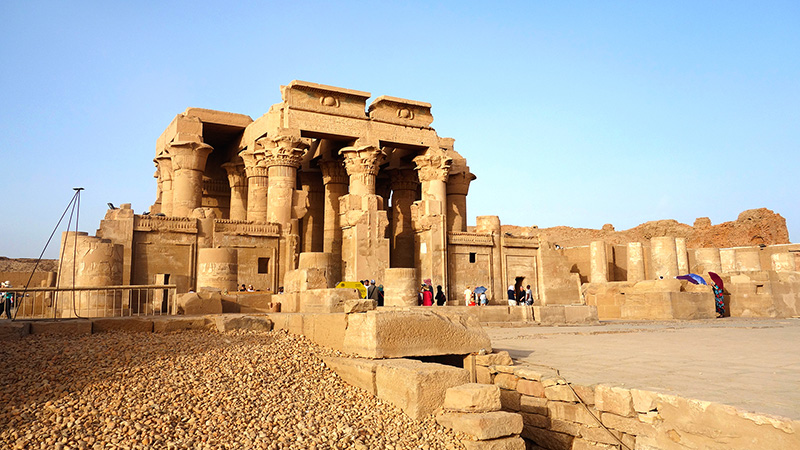 Temple of Kom Ombo
Temple of Kom Ombo
Temple of Edfu
One of the most impressive and comprehensive temples in ancient Egypt, the Temple of Edfu is situated on the west bank of the Nile and was built to honor the deity Horus. The Temple of Edfu is 137 meters long, 79 meters broad, and 36 meters high, and it reflects the conventional style of a temple with a tower. It keeps the classical construction from the Greco-Roman era. During Napoleon's campaign in Egypt in 1798, the temple was buried nearly 12 meters beneath the desert sands. When it was unearthed again in 1860, it was in good condition. The Edfu is the authentic source of information concerning Pharaonic Egypt's sacred realm. The translation of the hieroglyphic words found carved on the Temple of Edfu's walls, columns, and ceilings serve as a guide for current research into the untold history of ancient Egypt. The temple is a must-see for both archaeology and architecture fans since it blends ancient Egyptian and ancient Greek architectural styles.
Location: Adfo, Edfo, Aswan Governorate 1291237, Egypt
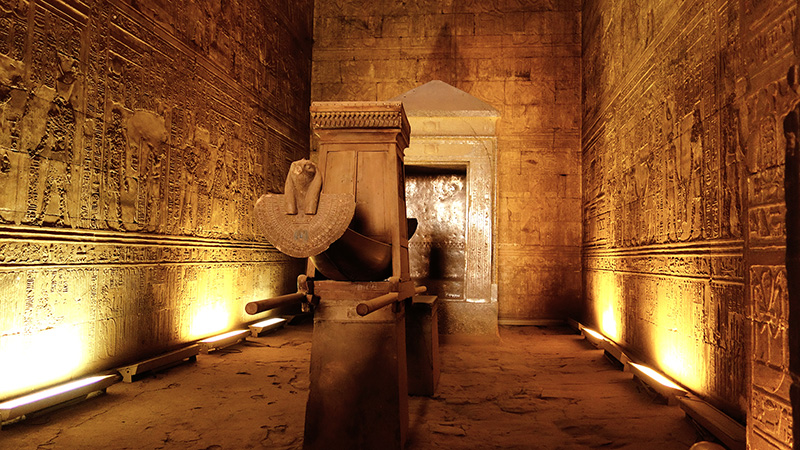 Temple of Edfu
Temple of Edfu
Philae Temple
The Philae Temple is regarded as the final ancient temple to be erected in classical Egyptian architecture. Its construction was finished about 690 AD. After a rescue operation, UNESCO relocated the temple to its present place. The sanctuary of the temple has a majestic entryway befitting a royal setting, measuring 32 meters wide and 12 meters high. The temple's walls are ornamented with a variety of reliefs, including French inscriptions by Napoleon and images associated with the worship of the Nile deity. It is important to note that the Philae Temple hosts lectures in several languages as well as music and light displays. For a better experience, visitors are suggested to go late at night.
Location: Aswan 1, Aswan Governorate, Egypt
Abu Simbel Temple
The Abu Simbel Temple, which is situated in Egypt on the western side of Lake Nasser, served as a physical boundary between Nubia and the ancient Egyptian Empire in the south. Four enormous, up to 20-meter-tall sitting sculptures stand guard at the temple's entrance. Numerous smaller monuments depicting the foes Ramesses II has vanquished throughout history may be found beneath the huge figures. The temple hosts a Sun festival twice a year, on February 22 and October 22, to commemorate the temple's alignment with the sun. Many tourists come to observe the temple's illumination by the sun as it shines through the stones.
Location: Al Bairat, Al Qarna, Luxor Governorate 1340550, Egypt
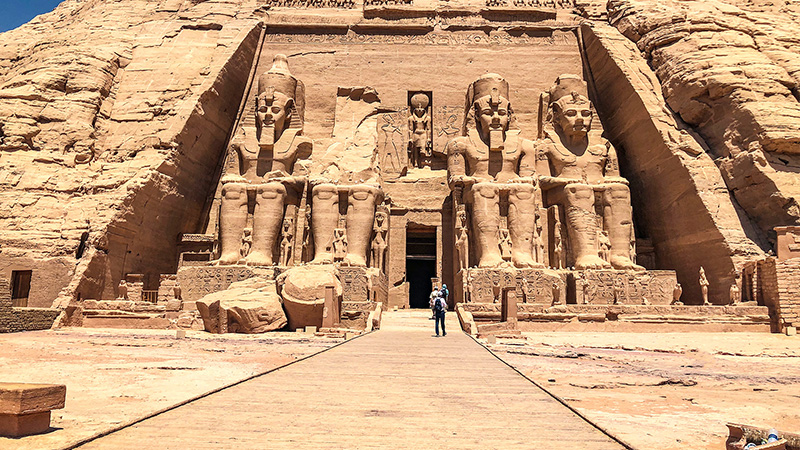 Abu Simbel Temple
Abu Simbel Temple
Medinet Habu Temple
Ramses III first erected the Medinet Habu Temple as a barrier against warring tribes. The column hall, which has six rows of columns, is among the nicest sites to visit. It displays pictures of gods and pharaohs. The entrances to additional rooms are on each of the hall's four corners. The walls of the fortress were richly painted with reliefs by ancient Egyptian artists. The reliefs depict battles against the enemy and are devoted to the ongoing conflict. It is important to note that the temple's entryway houses an open-air museum. It not only presents the many scenarios depicted throughout the structure but also depicts wars, parades, rites, and rituals using a variety of approaches.
Location: Al Bairat, Al Qarna, Luxor Governorate 1340550, Egypt
Temple of Hatshepsut
The elaborate and distinctive embellishments of the Temple of Hatshepsut, which is situated in the middle of a sizable mountain and was constructed for the 18th dynasty Pharaoh Hatshepsut. Its architecture differed from other ancient Egyptian temples, and it was constructed of limestone rather than sandstone. A colonnade is located at the conclusion of each of the temple's three floors. Lion sculptures surround the entrance to the temple's first floor. Two reflecting ponds and Sphinxes flank the hallway leading to another ramp that leads to the third level on the second floor. Beautifully painted reliefs that portray images from several temple rites and religious festivals adorn the walls of the temple.
Location: Kings Valley Rd, New Valley Governorate 1340420, Egypt
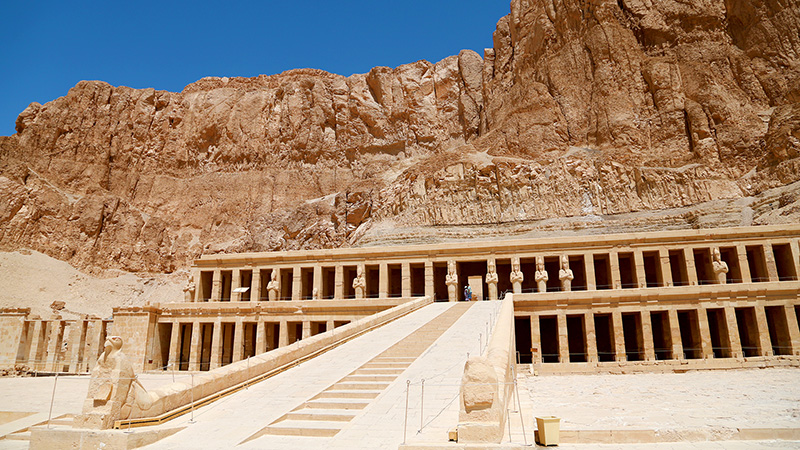 Temple of Hatshepsut
Temple of Hatshepsut
Temple of Seti I
The 19th Dynasty Egyptian pharaoh Seti I and his son Ramses II constructed the Temple of Seti I at Abaidos. The majority of the temple is composed of limestone, with some portions of sandstone. The temple has a tower, two open courtyards, two rooms with columns, and seven shrines, each of which is devoted to a significant Egyptian deity. Some beautiful reliefs may be seen on the walls of the colonnade on the temple's west face and, beyond it, on the walls of the courtroom with columns. The first and second towers as well as the court remain in ruins, despite the temple having undergone considerable restoration after being badly damaged in a flood in 1994. The temple still has a lot to offer tourists to explore, even though the old pharaonic palace is no longer there.
Location: PJMH+377, Naga Al Taref Inside Rd, Al Qarnah, Luxor, Luxor Governorate 1341767, Egypt
The majority of Egypt's temples are associated with the country's history and historical people. When visiting these temples, visitors can learn about the temples and the people who built them. In order to have a better travel experience, knowing something about the pharaohs and their ruins before going to Egypt is highly recommended.
If you're ready to explore these amazing temples in Egypt, please feel free to contact us, and one of our travel experts will create a tailor-made itinerary based on your interests and needs within 24hrs.
What Our Clients Say
Explore the latest verified reviews of Odynovo's travel services on Tripadvisor, Google, Trustpilot, Product Review and more trusted platforms.

